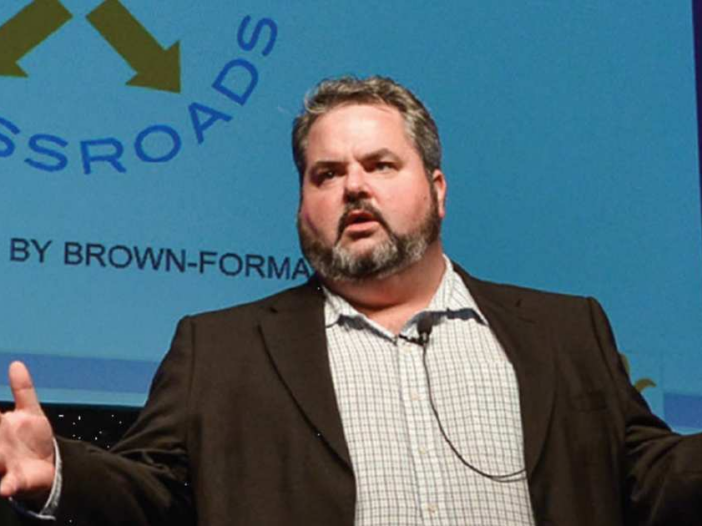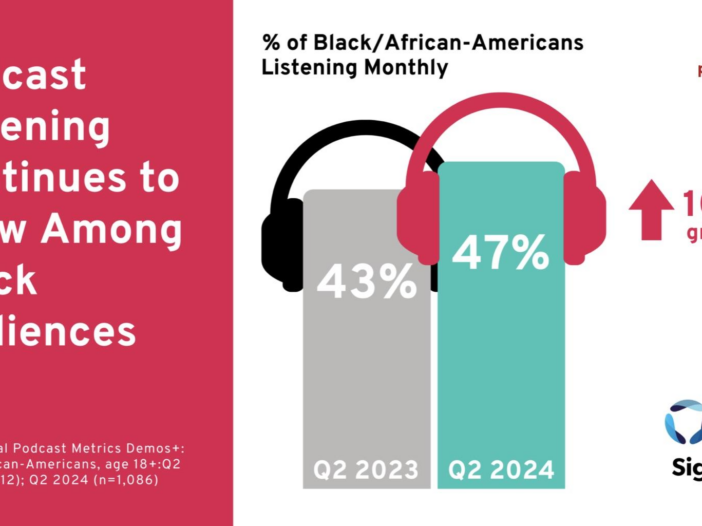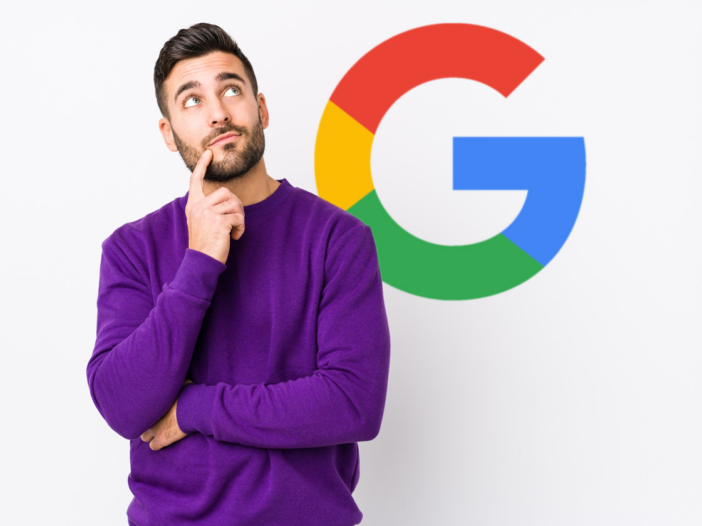Join this leadership discussion for proven techniques to build long-term relationships and keep your clients coming back.
Maximize your SEO efforts in 2024 with insights on Google’s SGE, algorithm updates, and expert tips to keep your site ahead.
Download this guide and learn how to optimize and manage Google Performance Max campaigns, with expert insights and actionable strategies to ensure your campaigns are effective.
Discover the latest trends, tips, and strategies in SEO and PPC marketing. Our curated articles offer in-depth analysis, practical advice, and actionable insights to elevate your digital marketing efforts.
Join three of Reddit’s top executives in this exclusive AMA (Ask Me Anything) to discover how you can tap into Reddit’s unique platform to drive brand growth.
Join this leadership discussion for proven techniques to build long-term relationships and keep your clients coming back.
Google’s Search Relations team makes predictions about the future of SEO.
Google’s Search Relations team gets together for a discussion on the future of SEO in the latest episode of the Search Off the Record podcast.
The team of Google’s John Mueller, Gary Illyes, and Martin Splitt talk about the changes they’ve seen in the past decade and anticipate what’s next for SEO.
More specifically, the three Google veterans touch on the following aspects of SEO and predict how important they’ll be within the next several years:
Here are all the highlights from the 45+ minute episode.
Mueller suggests SEOs won’t need to learn HTML in the future as content management systems (CMS’s) become more adept at taking care of the technical aspects of a website.
“Well, I mean it’s like if you just have a a rich editor and you just type things in and then you format your text properly and you add some links. What do you need to do with HTML?”
Illyes disagrees, saying SEO is more than just writing content. There are important elements of SEO that require some understanding of HTML, and that’s not likely to change in the future.
“But SEO is also about link tags and meta tags and title elements and all those weird things in the head section of the HTML that you can put there.
So you kind of want to know about them to control how your snippets look like or how your titles show up in search results and the rel canonical tag to control what will be the– or what should be the canonical version of a URL. You kind of want to know that.”
By the end of the discussion they’re all in agreement that HTML isn’t going anywhere as far as SEO is concerned.
JavaScript may become more important to SEO in the future, but more on the progressive web app (PWA) side of things versus traditional websites.
Mueller states:
“I think the user is kind of expecting to be able to use any app that they have in any platform, any device that they use. And it feels like that kind of work is going to continue as well. And probably, that means things like understanding JavaScript will become more and more important for SEOs as well…
But it probably also means that a lot of these apps suddenly have to think about SEO in general. Like what do they actually want to have findable on the web, because in the past, they were just apps.”
Mueller brings up the topic of URLs and whether they might go away in favor of entities or IP addresses.
Illyes says he doesn’t see URLs going away any time soon:
“Fortunately, URLs cannot go away… At least not in the foreseeable future, because the URLs they are the
standard way to communicate addresses on the Internet. And without that the Internet is just not the Internet.
The same way domain names cannot go away because of how the Internet is built or IP addresses cannot go away because of how the Internet is built. The same way URLs cannot go away.”
Mueller asks if there’s a possibility more meta tags may be introduced in the future.
Splitt immediately shoots down that idea, saying there’s almost never a good reason to introduce a new meta tag:
“I hope that we are not introducing more meta tags. And usually, when you see internal threads about, like, this search team wants to introduce a new meta tag. Then usually both John and I jump on that thread and we are pushing back quite aggressively because there’s very rarely a good reason to introduce a new meta tag.”
Will there ever be a point in the future where Google doesn’t need structure data to understand what’s on a page?
Splitt says Google is almost at that point already, but structured data is still helpful and recommended:
“I’m pretty sure we can understand: Oh, this is a product, and the product’s name is this and the product’s price is that and this is a product image.
But it is kind of nice to have this explicit machine-readable information where you can say: “Oh, so they specifically want us to think of it as a product.” It’s basically a glorified meta tag…”
Mueller brings up the topic of text generation algorithms and whether SEOs will even need human writers in the future.
Illyes has so much to say on this subject that he believes it should have its own podcast episode.
In short, Illyes sees potential in machine generated content and says it can be indistinguishable from content written by humans at times.
However, Google doesn’t want to rank machine generated content in search unless it has been reviewed by humans.
“I think that could be a topic on its own for a future podcast episode because we can see the pros and the cons of machine-generated content, and we are quite strict about what we allow in our index.
But on the flip side, you can also see very good and smart machine-generated—I don’t know if smart is a good word, but very intelligent machine-generated content…
Right now, our stance on machine-generated content is that if it’s without human supervision, then we don’t want it in search. If someone reviews it before putting it up for the public then it’s fine.”
Voice search is unlikely to be the next big thing in SEO, so don’t worry too much about learning how to optimize for it.
When asked about voice search, Splitt says:
“Oh God, the future that never will be. I think no, because if we learn anything—I remember a bunch of years ago, people were like: Oh, we’ll stop using keyboards and just do voice.
And I think that has been a recurring theme from the 90s. But I think in the future, it won’t change and will naturally or magically become the number one thing that we need to worry about, simply because it changes the input modality, and it changes probably how queries are phrased, but it doesn’t change the fundamental use of natural language to retrieve information from the Internet.
So I think you don’t have to worry too much about it, to be honest, but that’s maybe just me.”
See: Google: Voice Search Is Not The Future
Listen to the full podcast episode below:
Source: Search Off The Record
Featured Image: Andrey_Popov/Shutterstock
Matt G. Southern, Senior News Writer, has been with Search Engine Journal since 2013. With a bachelor’s degree in communications, …
Conquer your day with daily search marketing news.
Join Our Newsletter.
Get your daily dose of search know-how.
In a world ruled by algorithms, SEJ brings timely, relevant information for SEOs, marketers, and entrepreneurs to optimize and grow their businesses — and careers.
Copyright © 2024 Search Engine Journal. All rights reserved. Published by Alpha Brand Media.
Why 'Influence Marketing' Is Bigger Than Influencers: Jason Falls on Marketing Smarts [Podcast] – MarketingProfs.com
hosted by Kerry O’Shea Gorgone
Industry research predicts that the influencer marketing industry will reach between $5 billion and $10 billion by 2022. The same research reports that 93% of marketers use social media influencers.
Don’t miss a MarketingProfs podcast, subscribe to our free newsletter!
But they’re not using them in the most beneficial way for their business, according to MarketingProfs instructor and influence marketing expert Jason Falls. “It’s crazy how tunnel-visioned many companies are on using influencers for awareness,” he observes. “There’s so much more there.”
And Jason would know. As director of digital and social strategy at Cornett, his digital strategies have helped some of the words most iconic brands.
I invited Jason to Marketing Smarts to talk about how influence goes far beyond “influencers,” and how you can use “influence marketing” to get better results in every area of your business.
Here are just a few highlights from our conversation.
Influencers’ value isn’t limited to YouTube and Instagram: They can help improve your SEO (05:49) “I don’t think that very many companies or brands think of influencers in terms of ‘how can they impact my SEO.’ Why would you not want a person with a high-value, high-ranking, high authority website to link to you? It just doesn’t make any sense. Now if you are engaging an influencer to do a product review on their site and link back to you, you’re using it for SEO even if you’re not thinking of it in terms of SEO. But we can be much more intentional and strategic with how we use influencers for things like search.”
To track your influence marketing results, choose key performance indicators that align with your goals (12:25) “It all depends on your goals. If you’re trying to use influencers to drive people to try or buy, then you’ve got to use coupon codes and you’ve got to use custom URL parameters and you’ve got to use landing pages where you can capture and measure where these [leads] are going.
“Here at the Cornett Team, when we do influencer programs and we’re driving people to download a PDF on the website or trying to drive people to purchase a product or visit a landing page, we give each individual influencer their own UTM parametered link so that when it comes into our analytics system, it says ‘here’s everything you got from influencers’ and then ‘here’s everything you got from this one influencer.’
“So we can actually drill down in our Web analytics and say ‘this one influencer drove 250 downloads of this PDF,’ and so we know that influencer is more or less effective than the other ones. After you do that two or three times, you start to figure out the five or six that are really going to be where you want to spend your money. It helps you be more efficient in the long run if you’re planning to measure ahead of time.
“If you’re trying to drive brand awareness, you’ve got to do a lot of social listening, reach and impressions data, to see ‘where were we when we started and where are we now and how did that needle move?’ and you can isolate each individual influencer in certain ways by having them use certain hashtags or searching for their names, but you measure based on your goal.
“You measure based on your goal. So depending on what you’re trying to do, you set up your measurement ahead of time. The important thing, though, is to plan to measure, even if you’re a nonprofit and you’re trying to engage influencers to change people’s minds about how they think about a certain topic, you’ve got to say, ‘OK, how do I measure that?’ Well, I have to do social listening or surveys on the front end, and then after my program I’ve got to measure the same thing on the back end and compare them to see if I made a difference.”
Reviews from influencers can serve multiple marketing purposes (15:56) “[Influence marketing] can really check the boxes on every piece of marketing that you’re trying to accomplish if you want it to…. There are plenty of websites out there where ratings and reviews are very important and impactful for your SEO. Most of them have terms of service that say ‘we don’t accept paid or even prompted reviews,’ but if you are collecting reviews for your own website, you can collect reviews from whoever you want.
“And that’s content for your website. That’s social proof for your website because these are influential people, so you can say, ‘Here’s what Influencer A said about our product.’ And you can use that both as copy and creative to capture the eyeballs when they’re there, but you can also use that as the copy that you need to be able to attract those searchers to come into your website.
“There’s lots of ways you can use [influence marketing]. It’s really just a matter of sitting down and saying, ‘OK, what are our overall marketing goals and how does an influencer angle work to accomplish that?’ I don’t think there’s anything that you can’t find a way to use an influencer to accomplish, if you really put your mind to it.”
To learn more, visit JasonFalls.com. You can also follow Jason on Twitter at @JasonFalls.
Jason and I talked about much more, including influence marketing for B2B organizations and what kinds of expenses to budget for, so be sure to listen to the entire show, which you can do above, or download the mp3 and listen at your convenience. Of course, you can also subscribe to the Marketing Smarts podcast in iTunes or via RSS and never miss an episode!
This episode brought to you by the MarketingProfs B2B Forum.
Join more than 1,000 B2B marketing leaders (and aspiring leaders) as they gather for 70+ tactical sessions, inspiring keynotes, creative networking, and off-the-clock antics. It’s a can’t-miss event for any B2B marketer looking to level-up their career.
“Marketing Smarts” theme music composed by Juanito Pascual of Signature Tones.
…sign up for free to continue reading

Don’t worry … it’s FREE!
Sign in with your preferred account, below.
Don’t miss a MarketingProfs podcast, subscribe to our free newsletter!
Published on March 12, 2020 Jason Falls, author, speaker, influence marketing expert, and head of digital and social strategy at Cornett. Learn more about Jason at JasonFalls.com, and sign up for his newsletter. You can also follow him on Twitter at @JasonFalls.
Jason Falls, author, speaker, influence marketing expert, and head of digital and social strategy at Cornett. Learn more about Jason at JasonFalls.com, and sign up for his newsletter. You can also follow him on Twitter at @JasonFalls.
Kerry O’Shea Gorgone is senior editor and writer at Appfire. She co-hosts The Backpack Show LIVE with Chris Brogan and Punch Out With Katie and Kerry, and serves as Consigliere and Showrunner for Chris Brogan Media. Once upon a time, Kerry was a lawyer (number one in her class at Suffolk University Law School).
You may like these other MarketingProfs articles related to Public Relations:
Keep me signed in
Sign in with your preferred account, below.
Over 350,000 marketers rely on MarketingProfs for B2B know-how every day. Don’t miss out on the latest marketing tips and techniques, delivered right to your inbox.
Subscribe today … it’s free!
Sign in with your preferred account, below.
How To Navigate Social Media Trends & Emerging AI Technologies [Podcast] – Search Engine Journal
Join this leadership discussion for proven techniques to build long-term relationships and keep your clients coming back.
Maximize your SEO efforts in 2024 with insights on Google’s SGE, algorithm updates, and expert tips to keep your site ahead.
Download this guide and learn how to optimize and manage Google Performance Max campaigns, with expert insights and actionable strategies to ensure your campaigns are effective.
Discover the latest trends, tips, and strategies in SEO and PPC marketing. Our curated articles offer in-depth analysis, practical advice, and actionable insights to elevate your digital marketing efforts.
Join three of Reddit’s top executives in this exclusive AMA (Ask Me Anything) to discover how you can tap into Reddit’s unique platform to drive brand growth.
Join this leadership discussion for proven techniques to build long-term relationships and keep your clients coming back.
Podcast: Download
Subscribe: Apple Podcast Google Podcasts Spotify
How do you prepare your social and marketing team for AI? There are a ton of AI tools out there, but not all of them are useful.
Jamie Gilpin, CMO at Sprout Social, joined me on the SEJ Show to talk social, search, and how AI can play a bigger part in your strategy.
Gain valuable insight into virality, social media trends, and emerging AI technologies, and discover the seamless integration of these technologies into your team’s workflow.
Trends come from forces, and forces are the big cultural shifts that we see. As a result, the moment or signals from those forces become micro topics. –Jamie Gilpin, 05:43
In the world of SEO and search, search changes quickly. Social media trends change just as fast, whether it’s platforms or just the way that people are communicating. Everything used to be written. Then, it went to images. And now, video. –Loren Baker, 02:03
Social does infiltrate not just the full customer journey but all aspects of the customer’s enterprise. –Jamie Gilpin, 33:23
[00:00] – About Jamie
[02:03] – The evolution of social media trends & content consumption
[03:25] – Understanding trend culture and TikTok’s influence
[13:14] – The importance of having a business presence on TikTok
[19:51] – Opportunities to integrate AI in daily social media marketing workflows
[20:57] – Current discourse and applications of AI in marketing
[25:39] – Understanding the AI Assist Tool
[27:16] – Future of AI in visual content for social media marketing
[33:39] – Intersection of social media and search in consumer research
Resources Mentioned:
Sprout Social – https://sproutsocial.com/
One of the biggest opportunities, I would say, and it’s synonymous with the challenge we have on the marketing team, is that it’s so much easier to work autonomously in silos. Still, the real value, and more importantly, our customers expect that all those folks are working together and delivering one seamless customer experience. –Jamie Gilpin, 18:52
The worst thing that you can do, from a customer experience and perception perspective, is to not have a through-line for when your customer is ready to buy. When they see something they want to buy from you and can’t find it. –Jamie Gilpin, 15:13
That’s the future of social, and that’s why I get very excited about this space. It started in marketing, but it started as a tool for us to advertise another thing–another channel that we would push our message out. –Jamie Gilpin,32:26
For more content like this, subscribe to our YouTube channel: https://www.youtube.com/user/searchenginejournal
Connect With Jamie Gilpin:
Jamie Gilpin, the Chief Marketing Officer at Sprout Social, is a marketing maestro who knows how to grow brands in technology. Her knack for building stellar teams and driving revenue through ingenious strategies make her a force to be reckoned with.
From lead generation to social media sorcery, Jamie’s expertise shines through. Armed with an MBA from Northwestern University and a bachelor’s degree in public relations from Florida State University, she’s a marketing dynamo who knows how to make things happen.
Connect with Jamie on LinkedIn: https://www.linkedin.com/in/jamiegilpin/
Follow her on Twitter: https://twitter.com/jamiewo
Connect with Loren Baker, Founder of Search Engine Journal:
Follow him on Twitter: https://www.twitter.com/lorenbaker
Connect with him on LinkedIn: https://www.linkedin.com/in/lorenbaker
Loren Baker is the Founder of SEJ, an Advisor at Alpha Brand Media and runs Foundation Digital, a digital marketing …
Conquer your day with daily search marketing news.
Join Our Newsletter.
Get your daily dose of search know-how.
In a world ruled by algorithms, SEJ brings timely, relevant information for SEOs, marketers, and entrepreneurs to optimize and grow their businesses — and careers.
Copyright © 2024 Search Engine Journal. All rights reserved. Published by Alpha Brand Media.
Podcast listening grows among Black Americans – Podnews
Signal Hill Insights looks at The Listening and Consumer Habits of the Black (US) Podcast Audience, suggesting that the audience has grown 10% over the past year; and that they’re more likely to choose Sports, Music and Religion/Spirituality shows.
Spotify announced a major update to its self-serve ad platform, Spotify Ad Studio – and a new name, now called Spotify Ads Manager. There are new ad formats and measurement tools, as well as a redesign.
The British Podcast Awards announced the nominations for the 2024 awards. The winners will be announced on Sep 26 in central London, hosted by Marcus Brigstocke. The awards had over a thousand entries.
🚀 Create a gorgeous podcast website in 5 minutes — 📈 Designed using marketing techniques developed by the best podcasters. 🔎 Searchable content. 📱Mobile optimized. 🕵️♀️SEO perfection. No code required.
Podcast Movement prices go up TONIGHT! — Don't miss out on the best prices to join us at podcasting's best and most important annual event. Save big before midnight tonight…plus code PODNEWS saves an additional $50!
Don't miss any of the action from Paris! — Keep the Flame Alive, the podcast for fans of the world's biggest sporting event, offers daily episodes from Paris with all of the results and the best the city has to offer. Join us for the fun!
Sports podcasting is booming in the UK, says PressGazette. The article quotes YouTube views, which are public.
Microsoft Research is demonstrating a tool it calls GraphRAG, which (in part) uses podcast transcripts to produce a “knowledge-graph” of a podcast, making it easier to search. The website contains a short demo and an arXiv paper.
Google announced it is no longer planning to block third-party cookies in Chrome. Podcasts don’t use cookies; but podcasts do use IP addresses, which are increasingly hidden with VPNs, Apple’s Private Relay, and other tools. Google is suggesting it will hide IP addresses from Chrome next year.
Magellan AI has announced support for UID2 and ID5, to help advertisers measure their campaigns. Replacing things like cookies and IP tracking, UID2 and ID5 are centrally-administered personal identifiers, which allow advertisers to recognise individuals and serve them targeted ads.
Danny Brown suggests that, if your podcast host offers it, dynamic content can be used for much more than just advertising.
RedCircle suggest how to streamline your podcast process
Podcast News





Companies mentioned above:![]() British Podcast Awards
British Podcast Awards![]() Earwolf
Earwolf![]() Google
Google![]() Magellan AI
Magellan AI![]() RedCircle
RedCircle![]() Signal Hill Insights
Signal Hill Insights![]() Spotify
Spotify![]() YouTube
YouTube
#1 in Apple Podcasts Hysterical (Wondery | Pineapple Street Studios)
Hysterical (Wondery | Pineapple Street Studios)
#1 in Spotify The Joe Rogan Experience (Joe Rogan)
Play On Sports Show (YOUKNOW MEDIA)
Over the last week, 181,769 podcasts published at least one new episode (down 1.2%). source





















































































Readers and supporters
Google On Ideal Number Of Products On A Page In Context of Ranking – Search Engine Journal
Join this leadership discussion for proven techniques to build long-term relationships and keep your clients coming back.
Maximize your SEO efforts in 2024 with insights on Google’s SGE, algorithm updates, and expert tips to keep your site ahead.
Download this guide and learn how to optimize and manage Google Performance Max campaigns, with expert insights and actionable strategies to ensure your campaigns are effective.
Discover the latest trends, tips, and strategies in SEO and PPC marketing. Our curated articles offer in-depth analysis, practical advice, and actionable insights to elevate your digital marketing efforts.
Join three of Reddit’s top executives in this exclusive AMA (Ask Me Anything) to discover how you can tap into Reddit’s unique platform to drive brand growth.
Join this leadership discussion for proven techniques to build long-term relationships and keep your clients coming back.
What is the ideal number of products to feature on a webpage for ranking purposes?
Google’s John Mueller answered a question about how many product listings on a page are recommended as optimal for ranking purposes.
John Mueller suggested that the best answer could be found in considering the question from a different angle.
The person asked the question on the Mastodon social website.
He asked:
“@johnmu do you prefer an extensive product range (e.g. 30 products) on a page because offering many products is a ranking factor?
Or, would you prefer a smaller and more specific product range (e.g. 2 – 3 products) which contributes conversion more (less choice stress) in terms of E-E-A-T?”
John Mueller suggested that person asking the question should try answering the question from the perspective of usability.
Mueller answered:
“@beresterk That sounds like something I’d defer to usability-testing.”
Usability testing is a method for testing a product (or a webpage in this case) by allowing potential customers to interact with the webpage.
In a Google podcast about usability testing, Jenny Gove, a UX researcher at Google, offered these insights about the practice:
“Usability testing is like, for me, exposing the problems and exposing what works really well for users and understanding why.”
The host of the program, Mustafa Kurtuldu, Senior UX designer on Chrome (at the time), asked:
“How does someone start getting into doing research, like if they know next to nothing about it?”
Jenny answered:
“If you’re thinking about your product, as you’re sort of developing it at that stage of research, then it’s just great to get people using it for the tasks that you’re planning it for.
So even if that’s friends, family, even if that’s people in the office, it’s just great to get your product exposed to people like that so that you can watch what happens.
And in usability testing, we’re really looking for the problems people fall into and what works well for them and why it works well for them.
…you will see those things as they work through.
…And so you’ll be identifying your sort of most critical user journeys usually, and have them walk through that.
And often, it’s something like some language you use. We call that content, you know, the words you’ve got on the button or where you’ve positioned something, that just don’t make sense for most other people.”
She also suggested that friends and family testers may come with biases so it’s good at some point to test with people outside of those circles, to get a more unbiased result.
An excellent way to conduct usability testing on a website is through the use of the free Microsoft Clarity user behavior analytics tool.
The purpose of Microsoft Clarity is to show how people are interacting with a website, such as understanding how far users scroll before abandoning a webpage and other similar insights.
Microsoft published a blog post that shows how to debug website usability.
They offered three areas where Clarity helps improve usability and the user experience:
As an example, Clarity will show things like dead clicks which are an indication that users are getting hung up on a certain part of the page. Excessive scrolling is another indication of poor UX.
Circling back to the question about how many products to use on a page, the subtext of Mueller’s answer could be to identify what number of products on a page is optimal for the user.
The essence of SEO is generally seen as optimizing a webpage for ranking purposes, which means identifying what Google prefers.
So the person asking the question responded to Mueller’s suggestion by doubling down on finding out Google’s preferences.
He asked:
“@johnmu thanks for replying, appreciate it!
On behalf of conversion rate: yes!
In terms of ranking the SERP’s, what does Google prefer or what do you recommend?
Or does Google look to conversion rate in the end to decide which category page (shop) deserves a top spot in the rankings?
Am I already answering my own question?”
John Mueller responded:
“@beresterk I don’t think Google has a preference per-se.
It’s almost certain that things rank subtly differently, but that’s probably more anecdotal, and not by design.
Try it out.
I imagine the biggest effect is really on the user-side, which is more about your bottom line than anything else.”
Mueller wasn’t deflecting by advising the person to check out usability testing in order to better understand the ideal number of products to use on a webpage.
He confirmed that pages might rank differently depending on how many products are on the page, i.e. changes in the content.
But he suggested those changes are not by design, implying perhaps that it’s not a ranking signal type thing. It’s just Google responding to content.
It’s a good answer by Mueller because it’s a reminder that optimizing for Google isn’t always about how Google might respond to a change.
That may sound counterintuitive in the context of SEO but Google has a lot more signals that are related to the user experience now, such as the review system algorithm.
So it’s good to balance out the SEO by looking at a problem from the context of a user.
Read the Mastodon question and answer here:
Do you prefer an extensive product range (e.g. 30 products) on a page?
Featured image by Shutterstock/Asier Romero
I have 25 years hands-on experience in SEO, evolving along with the search engines by keeping up with the latest …
Conquer your day with daily search marketing news.
Join Our Newsletter.
Get your daily dose of search know-how.
In a world ruled by algorithms, SEJ brings timely, relevant information for SEOs, marketers, and entrepreneurs to optimize and grow their businesses — and careers.
Copyright © 2024 Search Engine Journal. All rights reserved. Published by Alpha Brand Media.




